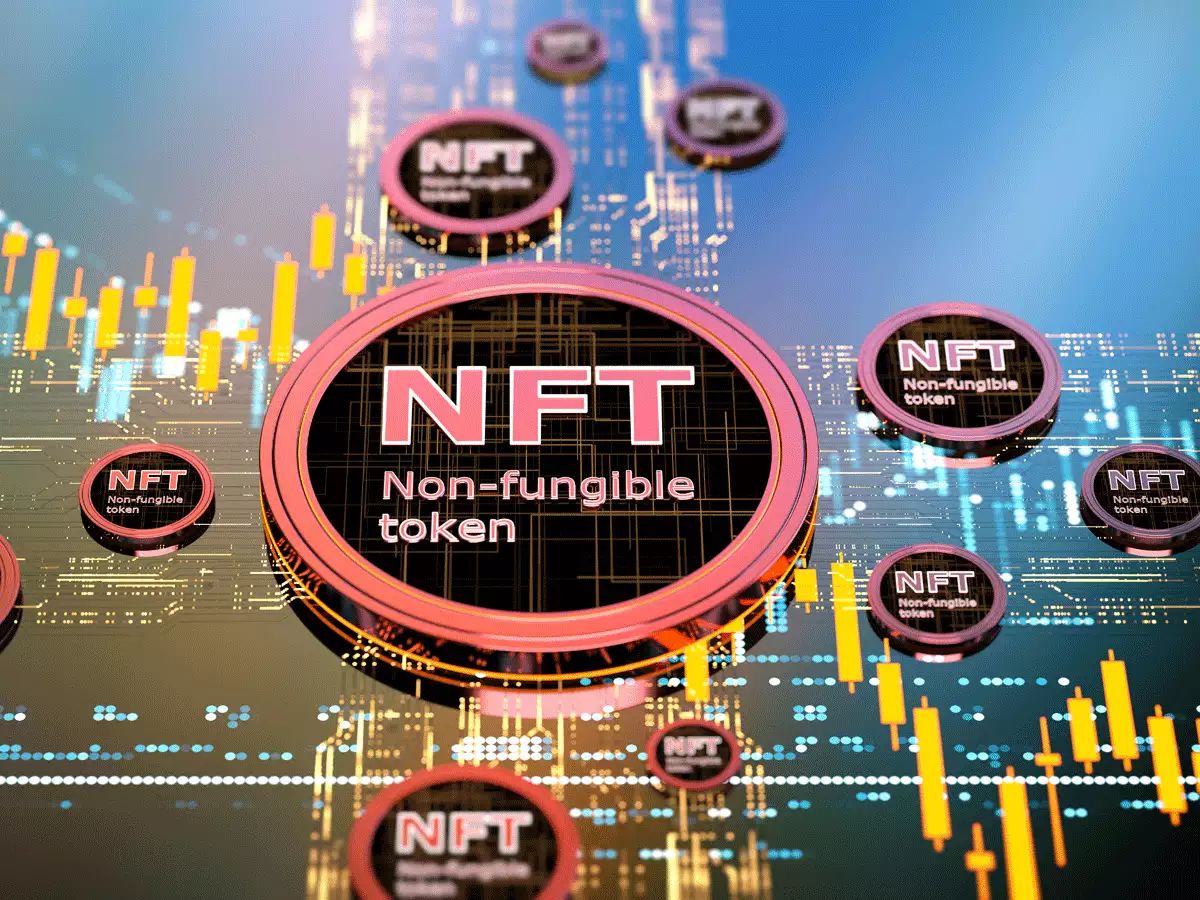Introduction
Welcome to the world of blockchain technology, where decentralized systems are revolutionizing various industries. One blockchain platform that has gained significant attention is the Flow Blockchain. In this article, we will explore the ins and outs of the Flow Blockchain, understanding its unique features, consensus mechanism, smart contracts, native currency, and its potential use cases.
The Flow Blockchain was developed by Dapper Labs, the creators of the popular blockchain game, CryptoKitties. Designed to address the scalability issues faced by other blockchain platforms, such as Ethereum, Flow aims to provide a high-performance solution for building decentralized applications (dApps) and facilitating the seamless transfer of digital assets.
With Flow Blockchain, users can leverage its advanced architecture to create, trade, and interact with digital assets, including cryptocurrencies, collectibles, and in-game items, with efficiency and security. The platform has garnered significant attention from various industry giants, including NBA Top Shot, which has leveraged the Flow Blockchain for its digital collectible marketplace.
Flow Blockchain differentiates itself from other blockchain platforms by focusing on developer experience, scalability, and usability. The architecture of Flow comprises several components, including a unique consensus mechanism, robust smart contract functionality, and a native digital currency called Flow Tokens. This ecosystem allows users to experience a seamless and user-friendly blockchain experience, making it an attractive option for developers and users alike.
In the following sections, we will explore the key features of Flow Blockchain, its consensus mechanism, the functionality of smart contracts, the significance of Flow Tokens, and various use cases where Flow shines. We will also compare Flow Blockchain with other popular platforms to understand its advantages and limitations. So, let’s delve deeper into the world of Flow Blockchain and unlock its potential.
Flow Blockchain: An Overview
The Flow Blockchain is a next-generation blockchain platform that aims to address the scalability challenges faced by other blockchain networks. Developed by Dapper Labs, the creators of CryptoKitties, Flow is specifically designed to support high-performance decentralized applications (dApps) and allow for fast and secure transactions.
One of the key issues that Flow aims to solve is the problem of scalability. Many existing blockchain platforms, such as Bitcoin and Ethereum, face limitations in terms of transaction speed and throughput. Flow tackles this problem by utilizing a unique architecture that separates the validation of transactions from the execution of smart contracts.
Flow Blockchain consists of four primary layers: the Consensus Layer, the Execution Layer, the Verification Layer, and the Application Layer. This layered structure enables Flow to achieve high performance and scale horizontally as more nodes and users join the network.
At the Consensus Layer, Flow implements a novel consensus algorithm known as the Practical Byzantine Fault Tolerance (PBFT), which ensures that transactions are validated and confirmed efficiently. PBFT enables near-instant finality, allowing users to trust that their transactions are secure and irreversible.
The Execution Layer is where smart contracts are executed. Flow supports multiple programming languages, including Cadence, its own resource-oriented smart contract language. Cadence ensures that contracts are secure, predictable, and capable of handling complex logic while preventing common pitfalls associated with other languages.
The Verification Layer is responsible for ensuring the correctness and validity of transactions and smart contracts. Verification nodes validate transactions independently and reach a consensus on their validity, further enhancing the security and reliability of the Flow network.
Finally, the Application Layer provides developers with the necessary tools and interfaces to build robust and innovative decentralized applications. Flow provides an easy-to-use software development kit (SDK), developer-friendly APIs, and extensive documentation to facilitate the creation of dApps on the platform.
With its unique architecture and focus on performance and usability, Flow Blockchain has gained notable recognition and adoption. The platform has attracted major partnerships with industry giants like NBA Top Shot, an officially licensed digital collectible marketplace. NBA Top Shot leverages Flow’s high throughput and user-friendly experience to offer fans a new way to engage with basketball through digital collectibles.
Overall, the Flow Blockchain offers a promising solution to the scalability challenges faced by traditional blockchain networks. Its layered architecture, efficient consensus mechanism, and developer-friendly features position it as a strong contender in the world of decentralized applications.
What Makes Flow Blockchain Unique
Flow Blockchain sets itself apart from other blockchain platforms through its unique combination of features that prioritize scalability, developer experience, and usability. Here are some of the key aspects that make Flow Blockchain stand out in the blockchain landscape:
Separation of transaction execution and validation: Unlike traditional blockchain networks, Flow separates the validation of transactions from the execution of smart contracts. This architectural design allows for increased scalability by enabling parallel processing of transactions, resulting in faster and more efficient transaction confirmation.
Developer-friendly environment: Flow Blockchain offers a developer-friendly ecosystem that focuses on providing a smooth experience for developers. It supports multiple programming languages, including Cadence, which is specifically designed for writing secure and resource-oriented smart contracts. The easy-to-use software development kit (SDK) and comprehensive documentation further simplify the development process, making it accessible to both experienced and novice developers.
High throughput: Flow’s unique architecture enables high throughput and horizontal scalability. By separating transaction execution and validation, Flow can process a large number of transactions simultaneously, resulting in a network that can handle increased transaction volumes without sacrificing performance or security.
Consensus mechanism: Flow Blockchain utilizes a Practical Byzantine Fault Tolerance (PBFT) consensus algorithm. PBFT ensures that transactions are quickly validated and confirmed, leading to near-instant finality. The consensus mechanism enhances the security and trustworthiness of the network, making it suitable for applications that require fast, secure, and irreversible transactions.
Native support for non-fungible tokens (NFTs): Flow Blockchain has built-in support for non-fungible tokens, making it an ideal platform for projects involving digital collectibles, virtual assets, and unique in-game items. This feature enables developers and users to easily create, manage, and trade NFTs, opening up a broad range of possibilities for creativity and innovation in various industries.
Strong ecosystem and partnerships: Flow has already established partnerships with renowned companies and organizations, including NBA Top Shot and UFC. These collaborations demonstrate the platform’s potential to disrupt traditional industries and pave the way for mainstream adoption of blockchain technology. The partnerships also contribute to the growth of the Flow ecosystem by attracting users and developers seeking to explore the capabilities of the platform.
Overall, the combination of scalability, developer experience, high throughput, innovative consensus mechanism, native NFT support, and strong partnerships makes Flow Blockchain a unique and promising platform in the blockchain space. By focusing on these key aspects, Flow aims to overcome the limitations of existing blockchain platforms and create an ecosystem that drives mass adoption and unleashes the true potential of decentralized applications.
Key Features of Flow Blockchain
Flow Blockchain offers a range of key features that contribute to its unique value proposition and set it apart from other blockchain platforms. Let’s explore some of the noteworthy features of Flow:
Scalability: Flow addresses the scalability challenges faced by traditional blockchain networks through its innovative architecture. By separating transaction execution and validation, Flow can process a high volume of transactions in parallel, resulting in improved scalability and throughput. This design allows Flow to handle the demands of decentralized applications and accommodate growing user bases without compromising performance.
Developer-Friendly Environment: Flow provides developers with a user-friendly ecosystem to create decentralized applications. It offers an intuitive software development kit (SDK), extensive documentation, and support for multiple programming languages, including Cadence, a secure and resource-oriented smart contract language. This developer-centric approach lowers the barrier to entry and empowers developers to bring their innovative ideas to life on the Flow Blockchain.
Practical Byzantine Fault Tolerance (PBFT): Flow employs the practical Byzantine Fault Tolerance (PBFT) consensus algorithm to achieve fast and secure transaction validation. PBFT ensures that transactions are quickly validated by a network of trusted nodes, leading to near-instant finality. This consensus mechanism enhances the security of the network, making it suitable for applications that require fast and reliable transaction confirmations.
Non-Fungible Token (NFT) Support: Flow Blockchain natively supports non-fungible tokens (NFTs), making it an ideal choice for projects involving digital collectibles, virtual assets, and unique in-game items. With Flow, developers can easily create, manage, and trade NFTs, opening up new possibilities for creative and innovative applications across a wide range of industries.
Separation of Roles: Flow distinguishes itself by separating the roles of various network participants. Validators focus on transaction validation, while execution nodes execute smart contracts and computations. This separation allows for specialization and improves the efficiency of the network by allocating resources appropriately based on the role.
Multi-Chain Architecture: Flow incorporates a multi-chain architecture, allowing for the creation of multiple parallel chains within the network. Each chain can have its own purpose and design, enabling developers to tailor their applications to specific use cases, while still benefiting from the security and scalability of the Flow ecosystem as a whole.
On-Chain Governance: Flow Blockchain implements a decentralized on-chain governance model that enables token holders and validators to actively participate in the decision-making process. This democratic governance structure ensures that the Flow ecosystem evolves in a transparent and inclusive manner, with upgrades and protocol changes being proposed and voted on by the community.
These key features collectively contribute to the value proposition of Flow Blockchain. With scalability, developer-friendly tools, PBFT consensus, NFT support, role separation, multi-chain architecture, and on-chain governance, Flow offers a robust and adaptable platform for building decentralized applications that can meet the demands of various industries and drive blockchain adoption to new heights.
Consensus Mechanism in Flow Blockchain
The Flow Blockchain utilizes a consensus mechanism known as Practical Byzantine Fault Tolerance (PBFT) to ensure the security and reliability of the network. PBFT is a well-established consensus algorithm that is widely recognized for its ability to provide fast and secure transaction validations.
In the PBFT consensus mechanism, the network consists of a group of trusted validators that work together to validate and confirm transactions. Here’s how the consensus process works in Flow:
- Request Phase: When a user initiates a transaction on the Flow Blockchain, it gets propagated to the network of validators. The validators receive the transaction and verify its authenticity and validity.
- Preparation Phase: During this phase, the validators gather a sufficient number of valid transactions and propose a block of these transactions to the network. Validators aim to achieve a consensus on which block of transactions should be included in the next block of the blockchain.
- Commit Phase: Once a proposal is made, the validators reach a consensus on the proposed block of transactions. They communicate and confirm their agreement on the validity of the proposed block. After the consensus is reached, the transaction is considered finalized and cannot be reversed.
The PBFT consensus mechanism used in Flow Blockchain offers several advantages:
Fast Finality: PBFT enables near-instant finality, allowing users to trust that their transactions are secure and cannot be altered. The consensus is reached quickly because the network only requires a fraction of validators (⅔+1) to agree on the block proposal, minimizing the time it takes to confirm transactions.
Resilience to Byzantine Attacks: PBFT is designed to be resilient to Byzantine attacks, where participants in the network may behave maliciously or unpredictably. With PBFT, the network can guarantee that transactions will be validated correctly, even in the presence of malicious nodes or network disruptions.
High Throughput: Flow’s consensus mechanism enables high throughput, allowing the network to process a large number of transactions in parallel. This scalability ensures that the Flow Blockchain can handle the demands of decentralized applications that require fast and efficient transaction processing.
Decentralization and Security: The PBFT consensus mechanism in Flow relies on a network of validators to reach consensus. This decentralized approach enhances the security and integrity of the network, as multiple validators need to agree on transaction validity. Additionally, Flow’s on-chain governance model allows token holders and validators to actively participate in decision-making, further promoting decentralization and community involvement.
Overall, the Practical Byzantine Fault Tolerance (PBFT) consensus mechanism in the Flow Blockchain provides a robust and secure foundation for the network. By enabling fast finality, resilience to attacks, high throughput, and decentralization, PBFT ensures the efficient and secure processing of transactions, making Flow suitable for a wide range of decentralized applications.
Smart Contracts on Flow Blockchain
Smart contracts play a crucial role in the functionality and programmability of the Flow Blockchain. They enable the execution of predefined actions based on predefined conditions, making decentralized applications (dApps) on the Flow platform transparent, efficient, and secure.
Flow Blockchain supports smart contracts written in various programming languages. One of the notable languages used for writing smart contracts on Flow is Cadence. Cadence is designed specifically for Flow and offers several features that ensure secure and predictable execution of smart contracts.
Resource-Oriented Smart Contracts: Cadence introduces the concept of resource-oriented smart contracts, which allow developers to define and manage unique resources on the Flow Blockchain. Resources can represent various assets, such as collectibles, in-game items, digital currencies, and more. The resource-oriented approach ensures that the contracts are well-structured, easily trackable, and enables secure ownership transfer of digital assets.
Type Safety and Predictability: Cadence provides a type-safe environment that helps prevent common programming errors and vulnerabilities. It ensures that variables are properly defined and used correctly, reducing the risk of bugs and security vulnerabilities. By embracing strong typing and static analysis, Cadence offers developers enhanced predictability and better control over their smart contracts.
Restricted Execution Capability: Smart contracts on Flow can specify execution restrictions, allowing developers to define the conditions of contract invocation. This level of control enables developers to limit access to certain functions or data, ensuring that specific actions can only be performed by authorized participants or under specific circumstances. This feature also enhances the privacy and security of the Flow network.
Smart contracts on Flow integrate seamlessly with the network’s consensus mechanism, Practical Byzantine Fault Tolerance (PBFT). As part of the consensus process, validators validate the execution of smart contracts, ensuring that the actions specified in the contracts are performed correctly and according to the predefined rules. This validation process guarantees the integrity and reliability of smart contract executions on the Flow Blockchain.
The Flow SDK and developer-friendly APIs provide tools and resources that simplify the development, deployment, and interaction with smart contracts on Flow. Developers can leverage the SDK to write, test, and deploy their smart contracts and utilize APIs to interact with and query contract data and state on the Flow network.
Due to its robust smart contract functionality, Flow Blockchain has been adopted in various domains, including digital marketplaces, decentralized finance (DeFi), gaming, and more. Its support for resource-oriented contracts, type safety, execution restrictions, and integration with PBFT consensus make Flow an attractive platform for developers seeking a secure and efficient environment for building decentralized applications.
Flow Tokens: The Native Currency of Flow Blockchain
Flow Tokens are the native digital currency of the Flow Blockchain. They play a crucial role in facilitating transactions, incentivizing network participants, and powering the decentralized applications (dApps) built on the Flow platform. Let’s explore the significance of Flow Tokens and how they operate within the Flow ecosystem.
Medium of Exchange: Flow Tokens serve as a medium of exchange within the Flow Blockchain. Users can send, receive, and trade Flow Tokens for various purposes, including purchasing digital assets, participating in token sales, or simply transferring value between different accounts on the network. Flow Tokens enable seamless and secure transactions within the Flow ecosystem.
Transaction Fees: When users interact with the Flow Blockchain, such as executing smart contracts or transferring Flow Tokens, they need to pay transaction fees. These fees are typically denominated in Flow Tokens and help ensure the security and integrity of the network by preventing spam and abusive use of resources. Validators validating transactions are rewarded with a portion of the transaction fees, incentivizing them to participate in the consensus process and secure the network.
Economic Incentives: Flow Tokens serve as a means to incentivize network participants to contribute to the growth and development of the Flow ecosystem. Validators, who play a critical role in securing the network and validating transactions, are rewarded with a portion of newly minted Flow Tokens. This incentivizes validators to maintain a high level of performance and reliability.
Governance and Voting: Flow Tokens provide holders with the ability to participate in on-chain governance and decision-making processes. Token holders can propose and vote on changes, upgrades, or policy decisions that affect the Flow Blockchain. This ensures that the community has an active role in shaping the development and future of the network, making it more decentralized and inclusive.
The Flow Token ecosystem also supports token swaps and bridges to other blockchains, allowing Flow Tokens to be exchanged for other cryptocurrencies or digital assets across different networks. This interoperability enhances the utility and liquidity of Flow Tokens, making them more accessible to a wider range of users and applications.
Flow Tokens hold value within the Flow ecosystem and can be traded on various cryptocurrency exchanges. The market value of Flow Tokens can fluctuate based on factors such as market demand, network usage, and investor sentiment. Individuals and businesses can participate in the Flow Token economy by acquiring, holding, and utilizing Flow Tokens within the network.
Flow Tokens have gained significant attention and adoption, driven by partnerships and integrations with various projects and industries. Notable collaborations include partnerships with NBA Top Shot and UFC, further expanding the utility and exposure of Flow Tokens in the sports and entertainment sectors.
Overall, Flow Tokens serve as the backbone of the Flow Blockchain, enabling transactions, incentivizing participants, and empowering token holders to actively participate in the governance and decision-making processes. With their versatile utility and growing adoption, Flow Tokens play a pivotal role in fueling the growth and success of the Flow ecosystem.
Use Cases for Flow Blockchain
Flow Blockchain provides a robust and scalable platform that unlocks a wide range of use cases across various industries. Let’s explore some of the key sectors where Flow Blockchain has the potential to make a significant impact:
Digital Collectibles: Flow Blockchain is an ideal platform for the creation, trading, and management of digital collectibles. Its support for non-fungible tokens (NFTs) allows artists, creators, and content owners to tokenize and monetize digital assets such as artwork, music, virtual items, and sports memorabilia. Projects like NBA Top Shot have already utilized Flow Blockchain to create official digital collectibles, providing fans with unique and verifiable ownership of their favorite moments in basketball.
Gaming: Flow Blockchain offers game developers a powerful infrastructure to build decentralized games and virtual worlds. The high throughput and performance capabilities of Flow enable seamless and immersive gaming experiences. Additionally, the ability to create and trade unique in-game items as NFTs on Flow provides players with true ownership and transferability of their virtual assets, fostering a vibrant and player-driven gaming economy.
Decentralized Finance (DeFi): Flow Blockchain has the potential to disrupt traditional financial systems through its decentralized finance applications. With Flow, developers can create DeFi protocols, including decentralized exchanges, lending platforms, and yield farming projects. Flow’s scalability and robust smart contract functionality enable efficient and secure financial transactions while offering users greater control and transparency over their assets.
Content Distribution: Flow Blockchain can transform the content distribution landscape by enabling direct peer-to-peer transactions between content creators and consumers. Artists, musicians, and content creators can tokenize and sell their work on Flow, eliminating intermediaries and empowering creators to receive fair compensation for their efforts. This new model of content distribution brings transparency, efficiency, and trust to the industry, ensuring that creators are rewarded fairly for their contributions.
Supply Chain: The transparent and immutable nature of blockchain technology makes Flow an ideal platform for supply chain management. Businesses can utilize Flow to track and authenticate the provenance of goods, ensuring transparency, reducing fraud, and improving traceability. By leveraging Flow for supply chain applications, businesses can increase efficiency, reduce costs, and provide consumers with greater confidence in the origin and authenticity of the products they purchase.
Identity Management: Flow Blockchain can also be utilized for secure and decentralized identity management solutions. By leveraging the blockchain’s immutability and cryptographic protocols, individuals can have control over their identity data and authenticate themselves in a digital environment without relying on centralized entities. Flow’s focus on privacy and security makes it a suitable platform for developing robust and user-centric identity management systems.
These are just a few examples of the many potential use cases for Flow Blockchain. The scalability, developer-friendly environment, and native token economy make Flow a versatile and adaptable platform that can underpin the digital transformation of various industries, unlocking new possibilities and driving innovation.
Flow Blockchain vs Other Platforms
Flow Blockchain distinguishes itself from other blockchain platforms through its unique features and design choices. Let’s compare Flow with some of the prominent blockchain platforms to understand its advantages and differentiating factors:
Ethereum: While both Flow and Ethereum are blockchain platforms, they have different focuses. Ethereum is known for its wide adoption and programmability, offering a robust platform for the development of decentralized applications. However, Ethereum faces scalability challenges, especially during periods of high demand, resulting in congestion and high transaction fees. Flow addresses these scalability concerns by separating transaction execution and validation, allowing for better throughput and performance.
Bitcoin: Bitcoin is the first and most widely recognized blockchain platform, primarily designed as a digital currency. Bitcoin’s focus is on store of value and peer-to-peer transactions. In contrast, Flow aims to provide a high-performance platform for building decentralized applications and facilitating the transfer of digital assets. While Bitcoin offers a secure and decentralized network, Flow’s architecture enables faster transactions and greater flexibility for developers.
Cardano: Cardano is a blockchain platform that emphasizes security and sustainability. It employs a proof-of-stake consensus algorithm and focuses on peer-reviewed research and formal verification of smart contracts. Flow, on the other hand, uses the Practical Byzantine Fault Tolerance (PBFT) consensus mechanism for fast and secure transaction validation. Flow’s design centers around scalability, developer experience, and usability, making it a suitable choice for dApp developers seeking high-performance and efficient transaction processing.
Polkadot: Polkadot is a multi-chain platform that aims to facilitate interoperability and communication between different blockchains. It connects multiple specialized blockchains called parachains to allow for the transfer of assets and data. Flow, on the other hand, is a single-chain blockchain platform that focuses on high-performance and scalability for dApp development. Flow’s design separates the validation and execution of transactions, enabling parallel processing and improved scalability.
In comparison to these platforms, Flow stands out with its unique architecture, which addresses scalability challenges while offering a developer-friendly environment. Flow’s separation of transaction execution and validation allows for better scalability and performance, making it suitable for high-demand applications. Additionally, Flow’s focus on supporting non-fungible tokens and its robust smart contract functionality cater to the needs of digital collectibles, gaming, and decentralized finance, providing specialized solutions for these industries.
Overall, Flow Blockchain differentiates itself from other platforms through its emphasis on scalability, usability, and tailored features for specific use cases. By providing a high-performance and developer-friendly environment, Flow aims to unlock the potential of decentralized applications and drive blockchain adoption across various industries.
How to Get Started with Flow Blockchain
If you’re interested in exploring the potential of the Flow Blockchain and getting started with building decentralized applications (dApps) or participating in the Flow ecosystem, here are some steps to help you begin:
Educate yourself: Start by familiarizing yourself with the fundamentals of blockchain technology and the unique features of the Flow Blockchain. Understand the concepts of decentralization, smart contracts, and consensus mechanisms. Explore the Flow website, whitepaper, and developer documentation to gain a deep understanding of the platform, its capabilities, and its vision.
Set up a Flow account: To interact with the Flow Blockchain, you’ll need to set up a Flow account. Visit the Flow website and sign up for an account. Follow the registration process, provide the necessary details, and create your account credentials. This account will give you access to the Flow ecosystem, including the ability to create, deploy, and manage dApps.
Explore the Flow Playground: The Flow Playground is a web-based environment that allows you to experiment and test your ideas without the need for a local development environment. Visit the Flow Playground and start exploring the available tools and resources. Use the built-in Cadence IDE to write and execute smart contracts in a sandboxed environment, gaining hands-on experience with Flow’s unique programming language.
Install the Flow CLI: If you prefer local development, you can install the Flow Command Line Interface (CLI) on your computer. The Flow CLI provides a set of command-line tools that allow you to interact with the Flow network, deploy contracts, create accounts, and interact with the blockchain. The Flow CLI documentation provides detailed instructions on installation and usage.
Join the Flow Developer Community: Connect with the vibrant and supportive Flow developer community. Engage in discussions, ask questions, and share your experiences. The Flow Discord channel and the community forums are great places to connect with other developers, learn from their experiences, and gain valuable insights.
Start Building: Once you have a solid understanding of Flow’s architecture and tools, it’s time to start building your own dApps on Flow. Leverage the Flow SDK, APIs, and developer resources to develop and deploy your smart contracts and create innovative applications. Experiment with different use cases, explore the possibilities of non-fungible tokens, and leverage the high performance and scalability of Flow to create exceptional user experiences.
Stay Updated: As the Flow ecosystem evolves, it’s essential to stay updated with the latest developments and updates. Follow the Flow blog, subscribe to official channels, and join relevant social media communities to stay informed about new features, partnerships, and opportunities within the Flow ecosystem. This will help you stay ahead of the curve and make the most out of the Flow Blockchain.
Remember, getting started with the Flow Blockchain requires continuous learning, experimentation, and an open mindset. Embrace the challenges that come with building decentralized applications and explore the immense potential of Flow to revolutionize industries and drive blockchain adoption.
Conclusion
The Flow Blockchain presents a compelling solution to the scalability challenges faced by traditional blockchain platforms. Its unique architecture, focus on developer experience, and support for non-fungible tokens (NFTs) have positioned it as a powerful platform for building decentralized applications (dApps) across various industries.
With the separation of transaction execution and validation, Flow addresses the scalability limitations faced by platforms like Ethereum and Bitcoin, enabling faster and more efficient transaction processing. The Practical Byzantine Fault Tolerance (PBFT) consensus mechanism ensures fast and secure transaction confirmation, enhancing the reliability of the network.
Flow’s developer-friendly environment, exemplified by the intuitive software development kit (SDK) and support for multiple programming languages like Cadence, empowers developers to create innovative and secure smart contracts. By supporting resource-oriented contracts, Flow enables the tokenization and management of digital assets, opening up new opportunities in areas such as digital collectibles, gaming, and decentralized finance.
The Flow Token serves as the native currency of the Flow Blockchain, facilitating transactions, incentivizing network participants, and enabling on-chain governance. Flow’s interoperability, scalability, and strong ecosystem partnerships make it an attractive choice for individuals and businesses looking to leverage blockchain technology.
As the Flow ecosystem continues to evolve, it presents numerous possibilities for digital transformation across industries, including digital collectibles, gaming, decentralized finance, content distribution, supply chain, and identity management.
Whether you’re a developer seeking a scalable and user-friendly blockchain platform or an enthusiast exploring the world of decentralized applications, Flow Blockchain offers a promising and versatile solution. By embracing the unique features and opportunities presented by Flow, you can join the growing community of innovators and leverage the power of blockchain technology to unlock new levels of transparency, efficiency, and creativity.

























